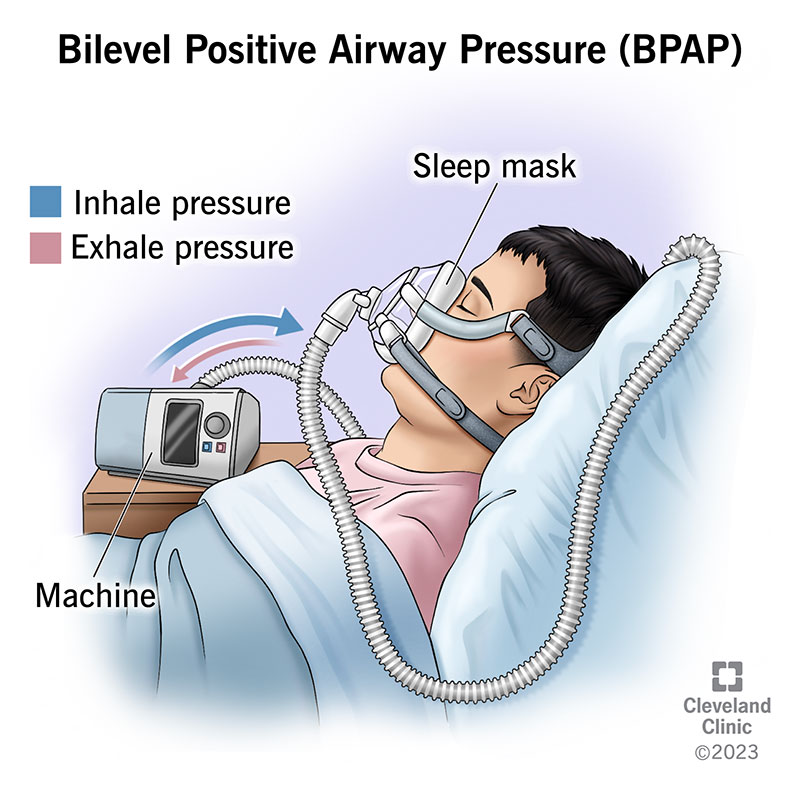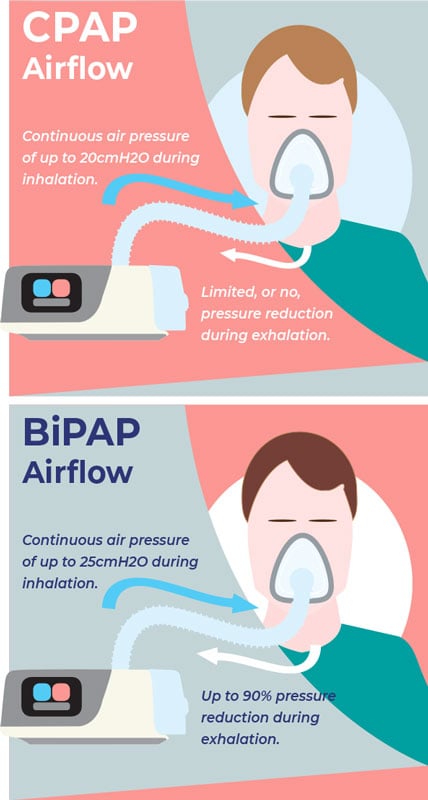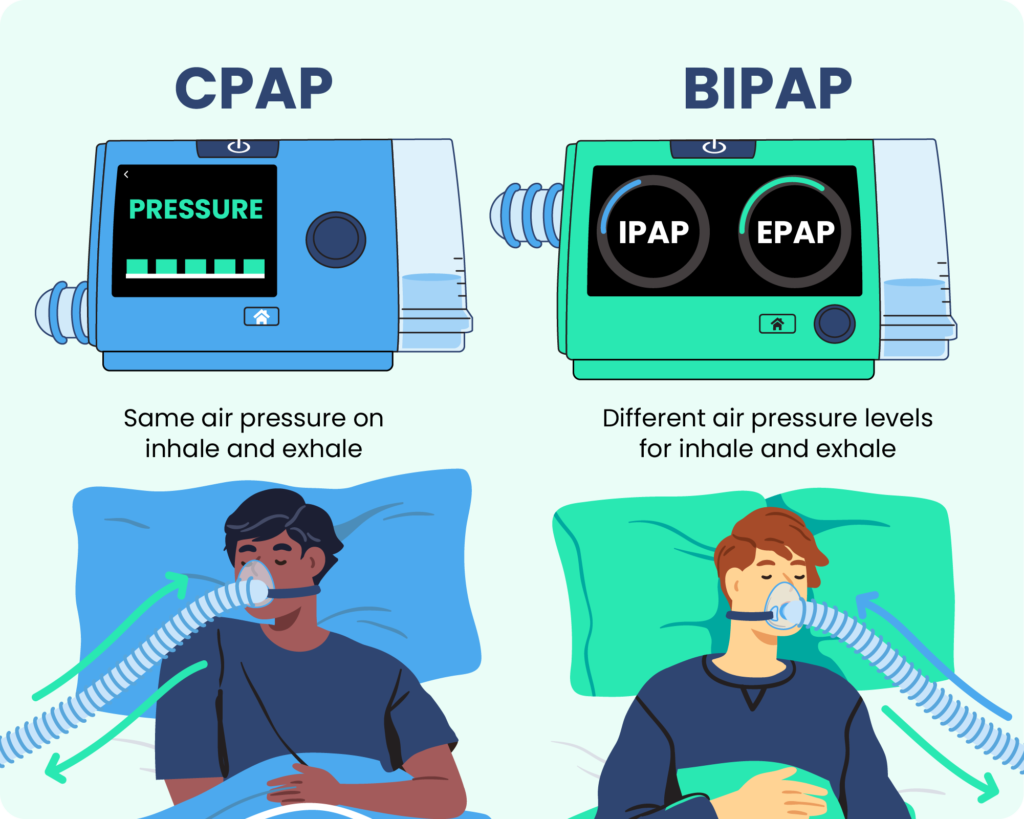BiPAP Rental: Hassle-Free Solutions for Temporary Demands
BiPAP Rental: Hassle-Free Solutions for Temporary Demands
Blog Article
Bipap vs. CPAP: Which Is the most effective for Your Rest Problem?
When browsing the intricacies of rest disorders, the choice between BiPAP and CPAP treatment is an important consideration. While CPAP provides a steady air movement ideal for obstructive rest apnea, BiPAP's twin stress setups might improve convenience for those with even more detailed respiratory concerns.
Comprehending Rest Disorders
Sleep disorders incorporate a variety of problems that interrupt typical sleep patterns, affecting both the top quality and period of remainder. These disorders can manifest in different kinds, consisting of sleeping disorders, rest apnea, narcolepsy, agitated leg disorder, and parasomnias. Each condition provides distinct challenges, often resulting in substantial daytime tiredness, cognitive disability, and emotional disruptions.
Sleep problems is defined by trouble falling or remaining asleep, while rest apnea involves duplicated interruptions in breathing throughout sleep, typically leading to fragmented rest. Narcolepsy, on the other hand, is marked by too much daytime drowsiness and unexpected rest attacks. Restless leg syndrome triggers unpleasant experiences in the legs, motivating an unmanageable urge to move them, which can also impede the capability to drop off to sleep.
The impact of rest problems prolongs past specific health and wellness, influencing total efficiency, connections, and high quality of life. Understanding the certain nature of each problem is critical for reliable medical diagnosis and therapy. As rest health ends up being increasingly acknowledged as an important component of total wellness, dealing with these conditions is crucial for improving both sleep top quality and everyday functioning.
Just How CPAP Functions
Constant Favorable Respiratory Tract Pressure (CPAP) treatment is frequently used as a key therapy for obstructive rest apnea (OSA) The device of CPAP includes the usage of a device that supplies a consistent stream of air with a mask used during rest. This air flow maintains favorable stress in the air passage, avoiding the collapse or blockage of the throat that can happen during rest.
When an individual inhales, the CPAP machine supplies a constant circulation of air, making certain that the air passage remains open - BiPAP Rental. This not just minimizes the symptoms of OSA, such as snoring and interfered with sleep patterns, but additionally reduces the affiliated health and wellness risks, consisting of cardiovascular difficulties and daytime fatigue
The stress setups on a CPAP equipment can be customized to satisfy specific client needs, typically established through a rest research. Overall, CPAP therapy has been revealed to dramatically boost the quality of sleep and overall health and wellness for people experiencing from obstructive rest apnea.
Just How BiPAP Functions
BiPAP, or Bilevel Favorable Respiratory Tract Pressure, is a specific kind of non-invasive air flow that is specifically beneficial for clients with conditions such as complex rest apnea or breathing conditions. Unlike CPAP, which provides a constant stream of air at a single pressure, BiPAP offers two distinct stress setups: a greater inspiratory stress for inhalation and a lower expiratory pressure for exhalation. This dual-pressure approach allows for easier breathing, reducing the initiative called for throughout exhalation.
The gadget operates through a mask fitted over the nose or mouth, connected to a machine that creates atmospheric pressure. When the person breathes in, the maker provides the higher stress to aid with air flow, guaranteeing that the airway remains open. Upon exhalation, the equipment instantly minimizes the pressure, making it extra comfy for the client to breathe out.

Key Differences Between BiPAP and CPAP

On the other hand, BiPAP (Bilevel Favorable Respiratory tract Pressure) uses two different stress settings: one for breathing and a reduced one for exhalation. This twin stress system permits more comfortable breathing, especially for people who have a hard time with exhaling against a constant stress. BiPAP is frequently suggested for people with complex sleep apnea, chronic obstructive pulmonary illness (COPD), or those that call for added assistance throughout sleep.
In addition, the intricacy of BiPAP tools typically results in a higher cost and requires much more cautious titration than CPAP. BiPAP Rental. Comprehending these crucial distinctions can help in acknowledging which tool might be extra ideal for details site rest problems, establishing the foundation for educated treatment decisions
Choosing the Right Treatment
Just how can one establish one of the most appropriate therapy for handling sleep disorders? The choice in between BiPAP and CPAP therapy mainly hinges on the specific characteristics of the rest condition, the individual's general health, and their convenience with the tool. CPAP, which provides a constant stream of air, is commonly suggested for obstructive rest apnea (OSA) It preserves an open airway throughout rest, efficiently preventing hypopneas and apneas.
On the other hand, BiPAP provides 2 levels of BiPAP Rental stress: one for inhalation and a reduced one for exhalation. This dual stress system is useful for patients with intricate sleep apnea or those that experience difficulty breathing out versus a constant stress. Furthermore, BiPAP is often advised for individuals with breathing conditions, such as chronic obstructive lung illness (COPD), where differing pressure settings can boost comfort and conformity.
Ultimately, a detailed assessment by a rest specialist, consisting of a rest study, can aid determine which therapy aligns finest with the patient's requirements. Factors such as convenience, ease of usage, and specific clinical conditions must also be taken right into consideration to enhance treatment results.
Final Thought
In summary, both BiPAP and CPAP serve unique objectives in the management of rest problems. CPAP works for obstructive rest apnea via consistent air flow, while BiPAP uses dual stress setups that enhance comfort for those with complex rest apnea or respiratory system issues. The selection in between these treatments need to be led by specific demands and problems, demanding a thorough analysis by a rest expert to make sure ideal treatment outcomes and improved top quality of rest.

In general, CPAP treatment has actually been shown to substantially boost the quality of sleep and general wellness for people suffering from obstructive sleep apnea.
BiPAP is usually recommended for clients with complicated rest apnea, persistent obstructive lung condition (COPD), or those that call for added assistance throughout sleep.
CPAP is effective for obstructive sleep apnea through constant air flow, while BiPAP provides double stress setups that boost convenience for those with complicated rest apnea or respiratory system problems.
Report this page